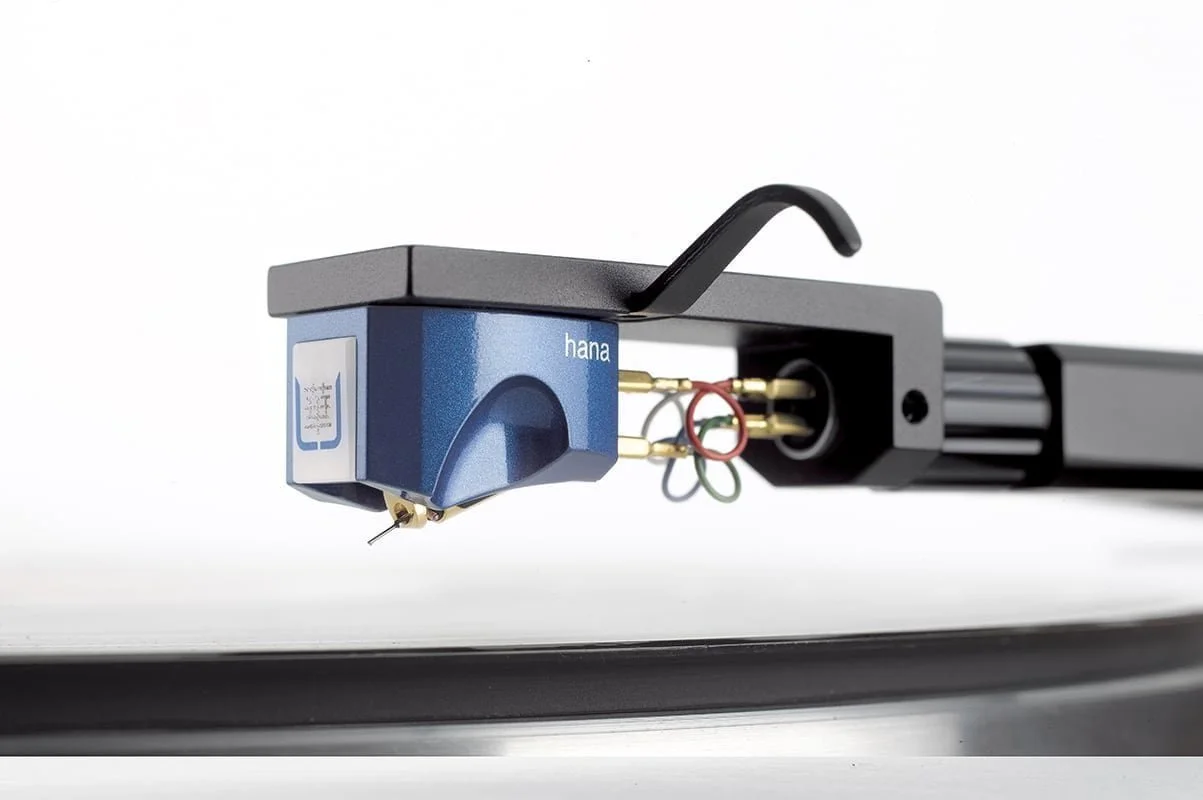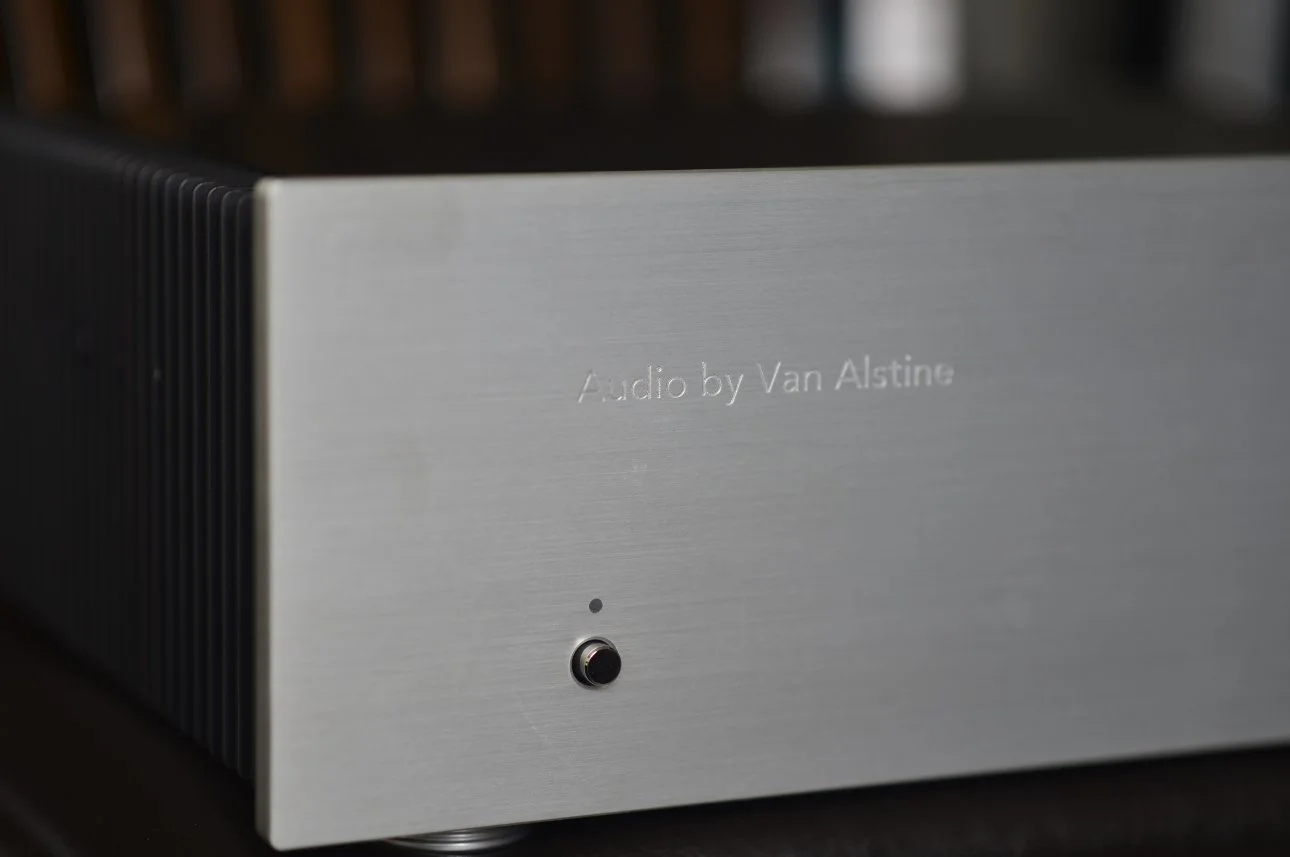The Hana Umami Blue High-End Moving Coil Cartridge
Few audio components reveal such apparent differences in sound as a turntable cartridge. This in turn can make you immediately like or dislike its sound characteristics. The type of cartridge on your turntable, be it mono, stereo, moving magnet, moving iron, moving coil, or even 78 rpm carts, can spice up your musical experience tenfold. As I write this, Carlos Kleiber and the Vienna Philharmonic fill my room with Beethoven Symphony No. 7; it’s the new Deutsche Grammophon remastering “The Original Source Series” or pure analog recording (released this year), and it sends waves of strings and brass with interesting dynamics. I own the original 1970s recording as well, and I did pick up some differences from the new recording. The imaging and separation, not to mention the high frequencies in the brass section are a welcome addition.
On my first listen of the new Original Source Series vinyl, in the last minutes of the finale, ten seconds of distortion were revealed, and it felt like a punch in the face. My cart had played the original Kleiber recording without distortion but was now having a fit in the last minutes of this great symphony. I did fix the distortion problem. I won’t go into what I did to fix the issue, my point is to say that the subject of this review, the Hana Umami Blue MC Cartridge ($2500), was faithful to the grooves it tracked.
The cartridge can be said to be the reality principal of your chain—of what needs to be analyzed and set up for the entire system to have that coveted synergy audiophiles are always talking about.
When you start down the vinyl path, there are many things to research, some complicated, like measurements of the tonearm, vertical tracking angle, alignment of the cart, stylus rake angle, zenith, and some less complex like the phono stage you want to use, tracking force and understanding the difference sound dynamics between a Moving Magnet or Moving Coil carts, for example. But once you have the setup ready and you lower that cart onto the groove, the magic begins.
The cartridge is one of the most important components in the sound you are looking for. After you have had your setup for a while, after you know what comes out of your speakers and turntable, your cartridge lets you explore new avenues in sound. One of the most exciting things in vinyl is precisely trying out new carts, the looks, the commitment to listening, the connection of the body to the tonearm, the careful way of installing it, and of course the sound, it’s all there for you to feel and engage with.
Hana is a brand of Japan’s Excel Sound Corporation—an original equipment manufacturer (OEM) for companies like Sumiko cartridges. For over fifty years the Excel Sound Corporation has mastered the craft. However, in 2016, Masao Okada, a master cartridge maker, started their in-house Hana carts. The experience of Excel has led to building hand-assembled cartridges that have made a mark in the vinyl world in just a few short years. Hana (Japanese for “flower”) came out with the Umami Red, their flagship cartridge in 2020. Before the Red, they had produced more affordable carts. The series included such stylus profiles as Elliptical, Shibata, and Microline (E, S, M) including low-output and high-output carts.
The Hana Umami Blue comes in a small wooden box with the Hana logo in blue right in the middle of the box, this gives it an old-fashioned jewelry box feel. Inside the box, we find the expected screws, tools for assembly, and a welcomed plastic guard for the stylus (I wish all high-end carts came with this guard), as well as some instructions for use; all in all, a very nice presentation.
Photo credit: Jesús González-Monreal.
Specifications
Body Material: Duralumin
Body Finish: Melamine Thermosetting Process
Cantilever: Boron
Stylus: Microcline Nude Diamond
Magnetic Circuitry: Pure Iron/Cryo Treatment
Armature Material: Permalloy
Magnet: Alnico
Output Pins: 24K Gold Plated
Coil Impedance: 8Ω at 1000 HZ with 0.4mV output
Output Level: 0.4mV
Coil Wire Material: High Purity Copper
Load Impedance: >80 Ω
Frequency Response: 15 to 50,000Hz
Output Balance: 0.5dB/1kHz
Channel Separation: 30dB/1kHz
Tracking Force: 2.0 grams
Trackability: 70 µm/2g
Dynamic Compliance: 10X10(-6) cm/dyne (100Hz) Estimated at 17X10(-6)cm/dyne at 10Hz
Weight: 10.8 grams
Height: 15.8mm
My Blue review unit spinning some Bluenote. Photo credit: Jesús González-Monreal.
Sound
My reference system consists of a Mark Levinson No. 5105 Turntable, Alyssa Speakers (Alta Audio), PS Audio’s integrated amp Stellar Strata, along with the magnificent phono stage of the same series, the Stellar Phono Preamp. For cables the Premium Pangea XLRs and Allnic ZL Power Cables. My go-to cart is the Phasemation PP-300, a dynamic-sounding moving coil cart. I swapped carts and felt excited, new sound, new experience—the fun starts here my fellow audiophile.
The good people at Musical Surroundings (Garth Leerer especially; they are Hana’s US distributors), quickly shipped the Hana Umami Blue, and being knowledgeable about Hana carts, he also sent some specifications. Garth recommended the settings for my PS Audio Stellar phono, with the gain at ’60 or 66dB’ and a resistive load of 100 ohms, I did just that and away I went.
The first detail or relevance I noticed from the Hana Umami Blue was how quiet it is, and I’d like to underline this, you can hear a pin drop (pun intended) in the room. It’s as if I had entered a vacuum and all the air went out of the space I was in. I usually hear between songs some type of sound, not a hiss necessarily but I know it’s there, present. The silence when there’s no music is like that of a CD player, and that’s a compliment!
Clarity was the name of the game for the Hana; there isn’t a low or high overload signature with the Umami Blue. Other carts I’ve listened to recently, like the Hana MC Stereo cart, or the Rega Ania MC, have a faithful sound character when I play albums I know well; or more high-end carts like the Phasemation I have in my setup. The similarly priced Phasemation has range, and is bright sometimes but unclouded, but is no match for the Umami Blue. The tonal balance and subtlety of the Umami Blue left the PP-300 in the background.
Yes, I can throw well-known audiophile words at you like “silky sound”, “neutral”, and “balanced”, but I want to describe that the experience is more of a pure presentation. This is not a “warm” cart, it’s a magnifying glass for your vinyl. The silence I mentioned before, elicits a soundstage I can honestly say I had never heard in my system. The Microline nude diamond stylus brings out noise as well, this is my subtle warning to you that if you get the Umami Blue, you have to either have your vinyl pristine clean, or you have to get a vinyl machine cleaner. It’s worth it, I know because I just purchased one (the HumminGuru, review forthcoming) and it’s all thanks to this cart. When you have clean vinyl, the performance of this tracking master is exceptional.
I will say that if you like a cart with a strong signature, bass or mids or highs, the Umami Blue will not satisfy your taste completely; the space and soundstage, definition of instruments, and imaging, are superb, but it’s not bass heavy, though bass is not missing. On the contrary, the neutral or precise dynamics of the recording will settle in comfortably through your speakers. I put on the Mingus Three (his trio with Hampton Hawes & Dannie Richmond) from the Jubilee label, and the performance was incredible, with Mingus leading the entire record flowed flawlessly. Vocals sound lucid and whole. Regina Spektor’s ‘Home, Before and After' album had a pronounced vividness to it. Finally, I tried Thievery Corporation’s classic The Richest Man in Babylon, where songs like “Until Morning” and “The State of the Union” never quite sounded so crisp and together as here.
Do you want more bass in that Mahler brass section of the Fifth? Does your amp or preamp make Ravel sound flat with your system? Can you have a wider soundstage for that now legendary Portishead vinyl if you invest in a new cart? My answer is yes, and the Umami Blue cart solved in part some of these issues. I am not suggesting that the Umami changes everything in your chain—another amplifier with a punchier bass is always an option or a better and livelier preamp for a wider soundstage can complement your setup, but I can say that this cart moved the needle enough for me that I heard differences in the execution. As such, my experience with these albums was more enjoyable.
Conclusion
Hana has made a cart with high resolution with a wonderful tonal balance that delivers magnificent sound for a fair price ($2500). You are getting a high-end cart with a great-quality build and a component that’ll make waves in your system. The Umami Blue is a must-upgrade for your analog setup. No doubt for me, this is going on my Audiophilia Products of the Year 2023 recommendations.
Further information: Hana










